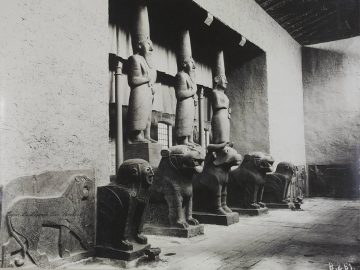Aaron Tugendhaft at Cabinet Magazine:
 When Samuel Beckett visited the Tell Halaf Museum in Berlin’s Charlottenburg district on 21 December 1936, he had the place to himself. Though King Faisal of Iraq had visited the makeshift museum when it opened six years earlier and the Illustrated London News had run a cover story on the quirky institution, the museum was hardly a popular tourist destination. You had to be in the know. After Beckett rang for the key, he was left alone among colossal lions, scorpion-bird-men, griffons, and sphinxes. “Superbly daemonic, sinister + implacable,” the yet unknown Irish writer wrote in his diary.
When Samuel Beckett visited the Tell Halaf Museum in Berlin’s Charlottenburg district on 21 December 1936, he had the place to himself. Though King Faisal of Iraq had visited the makeshift museum when it opened six years earlier and the Illustrated London News had run a cover story on the quirky institution, the museum was hardly a popular tourist destination. You had to be in the know. After Beckett rang for the key, he was left alone among colossal lions, scorpion-bird-men, griffons, and sphinxes. “Superbly daemonic, sinister + implacable,” the yet unknown Irish writer wrote in his diary.
The museum and its contents belonged to Baron Max von Oppenheim (1860–1946). Heir to one of Germany’s wealthiest banking families, Oppenheim had acquired the artworks through self-funded excavations at Tell Halaf (ancient Guzana) in northwest Syria. He sought to display his sculptures in the Pergamon Museum on Berlin’s prestigious Museum Island, but when negotiations fell through, Oppenheim settled for a disused machine factory on the other side of town.
more here.
